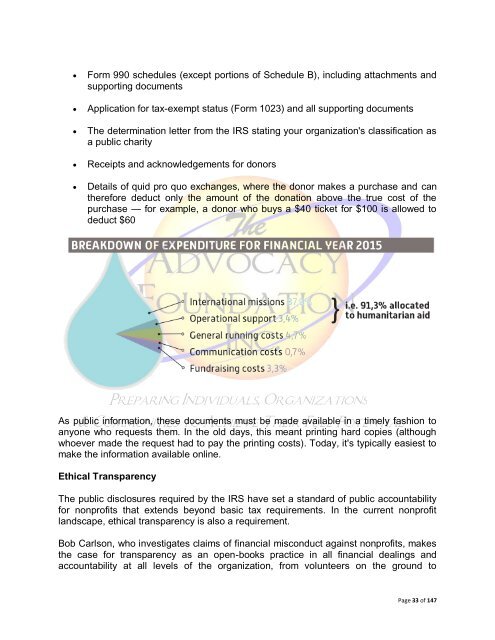Nonprofit Transparency
Nonprofit Transparency
Nonprofit Transparency
Create successful ePaper yourself
Turn your PDF publications into a flip-book with our unique Google optimized e-Paper software.
Form 990 schedules (except portions of Schedule B), including attachments and<br />
supporting documents<br />
Application for tax-exempt status (Form 1023) and all supporting documents<br />
The determination letter from the IRS stating your organization's classification as<br />
a public charity<br />
Receipts and acknowledgements for donors<br />
Details of quid pro quo exchanges, where the donor makes a purchase and can<br />
therefore deduct only the amount of the donation above the true cost of the<br />
purchase — for example, a donor who buys a $40 ticket for $100 is allowed to<br />
deduct $60<br />
As public information, these documents must be made available in a timely fashion to<br />
anyone who requests them. In the old days, this meant printing hard copies (although<br />
whoever made the request had to pay the printing costs). Today, it's typically easiest to<br />
make the information available online.<br />
Ethical <strong>Transparency</strong><br />
The public disclosures required by the IRS have set a standard of public accountability<br />
for nonprofits that extends beyond basic tax requirements. In the current nonprofit<br />
landscape, ethical transparency is also a requirement.<br />
Bob Carlson, who investigates claims of financial misconduct against nonprofits, makes<br />
the case for transparency as an open-books practice in all financial dealings and<br />
accountability at all levels of the organization, from volunteers on the ground to<br />
Page 33 of 147

















